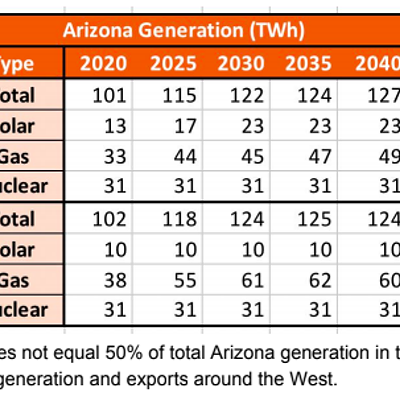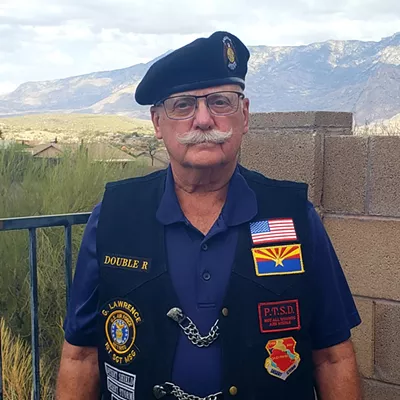Last fall, year-old Global Energy Resources was ushered into Cochise corridors by L.H. Hamilton, the county's facilities director. GER offered to sink $50 million into building what's called a plasma arc converter. The first of this particular type, the converter would theoretically turn trash into synthetic fuel, which GER could sell. In return, Cochise County would pledge its garbage to Global for 20 years.
At first blush, this seems like manna from heaven, since the county's sprawling landfill keeps filling up. But too many questions have only hazy answers, says David Leib of the watchdog group Concerned Cochise County Residents. To sell its project, he says GER has treated citizens of this largely rural county like a band of rubes. "These folks simply have not been upfront with us. The county has very little information to base any decisions on."
Meanwhile, Cochise officials are hustling this deal quicker than corn through a goose, setting up their constituents as guinea pigs for GER's weird science, says Leib.
That's a big mistake, according to Abbas Ghassemi. He's executive director of WERC: A Consortium for Environmental Education and Technology Development, at New Mexico State University in Las Cruces, N.M. "Plasma arc converters have their pros and their cons," Ghassemi says. "That's why I always advise communities to do their homework ahead of time."
Such advice falls on deaf ears in Cochise, says County Supervisor Paul Newman. "I'm not at all satisfied with the amount of information" provided by GER. Among the supervisors, Newman has been the most constant critic of this project. He says he agreed to an initial agreement with GER--now in the works--just "to buy us more time."
Case in point: Newman says that John Cummings, president of GER, has long stated the plant wouldn't create emissions. But Cummings then shifted his position while under fire at a recent meeting, says Newman. "I was outraged when I heard him. There is simply no reason to trust them."
Contacted in his California office, GER President John Cummings now says there will be minute emissions from the plant. Asked why his company failed to mention this earlier, he simply says "We'll stand by our statement that these plants do not create measurable emissions."
Suddenly, "measurable" becomes key. But a question lingers: Are measurable emissions the same as zero emissions? Perhaps we should ask Paul McGuire, a senior salesman with General Electric. McGuire has old business ties to Cummings and to L.H. Hamilton. If county supervisors give a green light, McGuire's company would likely finance much of the $50 million plasma arc converter, along with selling seven or eight high-priced generators to the project. In turn, McGuire has fielded many technical details about the converter.
In January, he responded to a list of e-mail questions submitted by citizens, and routed through L.H. Hamilton. Among the answers provided was this: the "facility would have no emissions except those emissions from the generators."
Contacted by phone, McGuire emphasizes that "there are no emissions from a gasifier that I'm aware of."
No emissions or no measurable emissions? For straight answers, the Tucson Weekly called Steve Brown in the University of Arizona's Chemistry Department. "Any time you create enormously high temperatures, you create enormously high temperature gasses," says Brown. "So unless you have some kind of devise to dissipate that heat, you dump that out into the air."
Likewise notable: the e-mailed questionnaire was returned by McGuire on January 14 under the title "GE'S 24 ANSWERS REGARDING INCINERATOR." Given that incinerators are about as popular as rendering plants, GER spin-meisters must have been snoozing when that one shipped out; Cummings and crew have steadfastly denied that their proposed plant is actually an incinerator at all. "It's not an incinerator, adds McGuire. "It's a gasification system."
Huh?
Well, here's how the U.S. Environmental Protection Agency defines plasma arc converters: "An incinerator that operates at extremely high temperatures ..."
Where does the truth lie? When pressed to clear the air, McGuire gets testy. "What you're doing here," he says, "is just taking the liberal side, with (Paul) Newman."
But to Abbas Ghassemi, it's hardly a matter of liberal or conservative. "It's really a matter of terminology," he says. "When you go over a certain temperature, you are a little further out in the incineration domain. But in a terminology sense, there's also a little bit of marketing involved." Companies such as GER "know that if they say 'incineration,' people won't use it."
Playing semantic shuffle with dangerous heavy metals is more cumbersome, however. Such metals always lurk in landfills, says Ghassemi. "You'll find a little bit of lead, a little bit of chromium, a little bit of mercury. Those will not be destructed through the plasma arc process. So end up with a concentrated mixture of heavy metals and something that you may not want to have in your possession."
GER's Cummings disagrees. "He doesn't know he's talking about," he says of Ghassemi. According to Cummings, in the plasma arc conversion process, heavy metals "disassemble at a molecular level."
Big deal, says Dr. Anne Padias, a 20-year veteran in the UA's Chemistry Department. "They still are heavy metals," she says. "If it's a chromium compound to start with, it's still a chromium compound at the end. If it's a chromium atom, it's still going to be in there, no matter what. You can't make it disappear."
Disassembled or not, heavy metals can wreak havoc, says Ghassemi. "Over a period of time, heavy metals have demonstrated that they are causing issues with human health with even limited levels of ingestion. They are carcinogenic; they can cause retardation and the inability to sustain clear thoughts."
Complicating all of this--and making the truth easier to twist--is Cochise County's potential role as host to the first plasma arc converter of this type. And that could cause a few headaches for Steve Owens, director of the Arizona Department of Environmental Quality. "We haven't even been approached by (GER) with any information about this incinerator," says Owens. "We don't have any information about what it would do, what it would look like, or anything like that.
"So at this stage of the game, really all we know about this facility is what we've read in the papers, and by what information has been provided to us by Supervisor Newman, who was the first person in Cochise County to talk to us about it."
If GER seeks an air quality permit for the facility, the company must finally answer all the questions it's been dodging in Cochise County. That information would include "design plans about how the facility would be constructed, what it would look like, what it would use for fuels, as well as a list of conceivable emissions that could come from the facility," says Owens.
"That's where the real questioning occurs on our part, because this is such a new technology. We would want to be as comprehensive as we could be on the front end, on identifying potential emissions."
At least the ADEQ now has a head start, says Owens. "Certainly, Supervisor Newman deserves an awful lot of credit for the kinds of questions he's been asking about this, and for making sure that environmental and other issues are addressed before the project gets too far along. The reason we know what we do know about this facility is because of Supervisor Newman's communications with us."
Paul McGuire feels differently. "What this thing will do is cut (methane) gas emissions in the landfill by 60 percent," he huffs. "You've got crap going out in the air right now. You think that's better that taking the garbage and making a gas you can make a fuel out of?"
Well, it's certainly not better for the profit margins of GE or GER, says David Leib. But call the project an incinerator or a plasma arc converter; it still comes down to "a very hazardous process," he says. "There are plasma arc converters all over the world that have been closed down or exploded, causing all sorts of deaths and injury. And now these people want to put the same thing in our community?"







